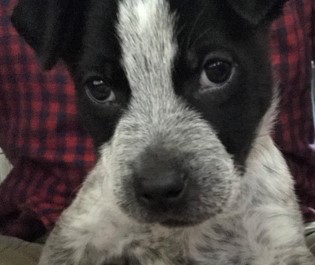{kuzco} is a simple vision boilerplate built for ollama in R, on top of {ollamar}. {kuzco} is designed as a computer vision assistant, giving local models guidance on classifying images and return structured data. The goal is to standardize outputs for image classification and use LLMs as an alternative option to keras or torch. ({elmer} support TBD)
You can install the development version of kuzco like so:
devtools::install_github("frankiethull/kuzco")This is a basic example which shows you how to use kuzco.
library(kuzco)
library(ollamar)here we have an image and want to learn about it:
test_img <- file.path(system.file(package = "kuzco"), "img/test_img.jpg") llm_results <- llm_image_classification(llm_model = "llava-phi3", image = test_img)llm_results |> tibble::as_tibble()
#> # A tibble: 1 × 7
#> image_classification primary_object secondary_object image_description
#> <chr> <chr> <chr> <chr>
#> 1 puppy dog ear A puppy with black and w…
#> # ℹ 3 more variables: image_colors <chr>, image_proba_names <list>,
#> # image_proba_values <list>llm_results |> str()
#> 'data.frame': 1 obs. of 7 variables:
#> $ image_classification: chr "puppy"
#> $ primary_object : chr "dog"
#> $ secondary_object : chr "ear"
#> $ image_description : chr "A puppy with black and white fur."
#> $ image_colors : chr "#909091, #ffffff, #763c2f, #8fbc8b, #e6c774, #a3ca8d, #354a88, #8faec8"
#> $ image_proba_names :List of 1
#> ..$ : chr "puppy, black, white, fur, ear, snout, eye, nose"
#> $ image_proba_values :List of 1
#> ..$ : chr "0.62, 0.21, 0.75, 0.43, 0.89, 0.67, 0.38, 0.45"llm_emotion <- llm_image_sentiment(llm_model = "llava-phi3", image = test_img)
llm_emotion |> str()
#> 'data.frame': 1 obs. of 4 variables:
#> $ image_sentiment : chr "neutral"
#> $ image_score : num 0.52
#> $ sentiment_description: chr "The dog appears curious and attentive."
#> $ image_keywords : chr "curious, attentive, eyes"llm_detection <- llm_image_recognition(llm_model = "llava-phi3",
image = test_img,
recognize_object = "nose")
llm_detection |> str()
#> 'data.frame': 1 obs. of 4 variables:
#> $ object_recognized : chr "yes"
#> $ object_count : int 1
#> $ object_description: chr "A small black and white dog's nose. It is right in between his eyes."
#> $ object_location : chr "middle of the face"
